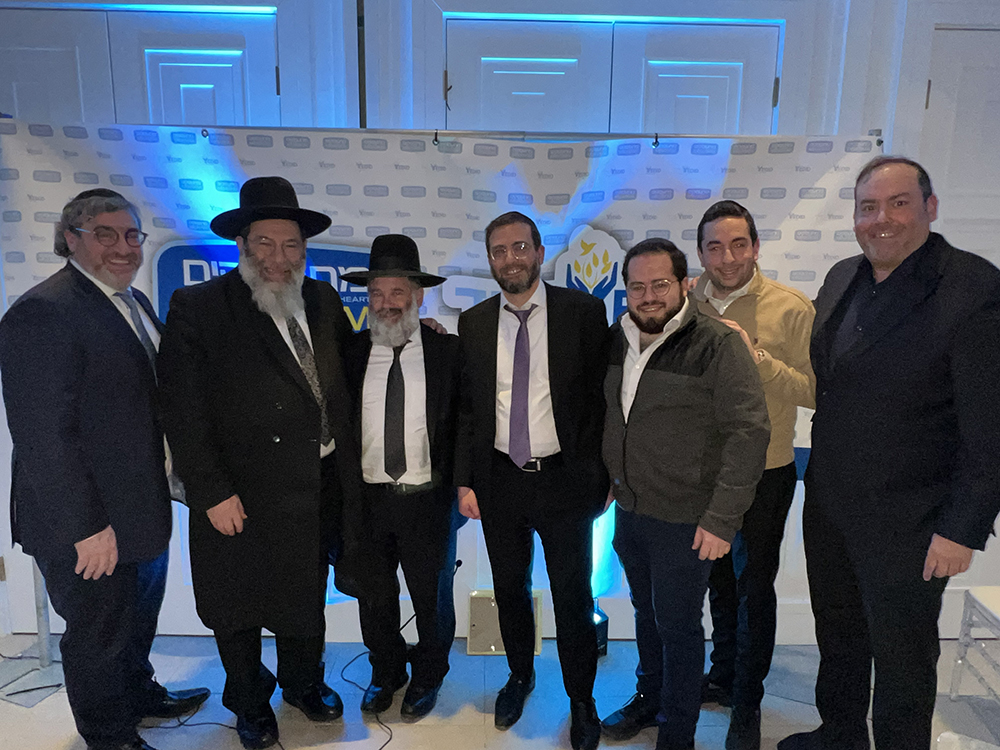We are now a bit more than a week past Chag Matan Torah, Shavuos. It has come and gone—and hopefully, you’ve recovered from the lack of sleep and overindulgence in cheesecake. Most importantly, I hope it was an inspirational Yom Tov. But now that it’s over, is there anything left for us to hold on to? Or are we just waiting to fast-forward to the next exciting event?
I once heard a gadol jokingly say that people wish they could go to sleep on Shavuos morning and wake up again for Simchas Torah. But between those two peaks lies a serious time, followed by Elul. Is there something from Shavuos we’re meant to carry forward?
Shavuos is only one day, yet it has unique rules regarding its korbanos. In the times of the Beis HaMikdash, everyone brought personal offerings—the Chagigah, an Olah for being oleh regel, and a Shelamim for simchah. The Chagigah and Olah could be brought on Yom Tov, but other offerings were delayed. On Pesach and Succos, these were brought during Chol HaMoed. But for Shavuos, they were offered during the six days following the Yom Tov, known as sheishes yemei miluim. The Rambam explains this unique practice. Today, some commemorate it by not saying Tachanun during these days.
Why is Shavuos unique in this way?
Chazal teach that Shavuos holds more kedushah than either Pesach or Succos. The Zohar says we will be redeemed on Shavuos. What exactly that means is beyond this discussion, but let’s examine what happened after the original Shavuos.
After Kabbalas HaTorah, Moshe Rabbeinu ascended Har Sinai for forty days and nights, learning Torah at the highest level. Meanwhile, Klal Yisrael—fresh off hearing Hashem’s voice, wearing two heavenly crowns, and at a spiritual peak—was left without a clearly defined avodah. Rav Shlomo Brevda pointed out that they lacked structured spiritual focus during this time. But what should they have been working on?
The Tur says Shavuos corresponds to Yitzchak Avinu, who embodied self-negation for the sake of Hashem. Kabbalas haTorah requires not only excitement but surrender—bittul—accepting the Torah’s authority even when we don’t understand it. This is especially true of the Torah sheba’al peh, the Oral Torah.
Many mistakenly believe the written Torah is the primary source, while the Oral Torah is just commentary. That’s a major error. The Torah sheba’al peh is the core; the written Torah is like a set of brief headings that need explanation. The enormous corpus of seforim we have today—all expanding on these verses—is a testament to this. Even the rules for deriving halachah, like the 13 principles of Rabbi Yishmael, are not human inventions. They are part of the mesorah from Sinai. Even when Chazal use human logic, it is Torah from Hashem.
Klal Yisrael needed to internalize this during the forty days following Matan Torah. Their task was to accept the totality of Torah—both what they understood and what they didn’t. Without that internal avodah, they became vulnerable. The result was the sin of the Golden Calf.
That sin, driven by the Eirev Rav, led to Moshe ascending again for forty days of teshuvah, followed by another forty when he received the second Luchos. On Yom Kippur, he returned with the message that Hashem had forgiven them. In this sense, the spiritual journey that began on Shavuos truly concluded on Yom Kippur. Perhaps that’s why the sheishes yemei miluim extend beyond the holiday—to remind us that the work continues.
Let’s examine the Eirev Rav a bit more closely. Moshe accepted them without asking Hashem, seeing potential greatness. Some were even from Amalek. They were inspired to join Klal Yisrael, but not ready to accept full submission to the Torah. That flaw led to devastating consequences.
When they believed Moshe had died, they panicked. “We need to act! Let’s make an idol!” But didn’t they just hear Lo Yihiyeh Lecha? Their justification: “Yes, but we think this is the right move.” They could not negate their own reasoning to follow the Torah’s authority.
Later, in Parshas Beha’aloscha, it was again the Eirev Rav who complained about the mon and demanded meat. Instead of trusting Hashem’s plan, they declared, “We want something else!” They were not ready to be mevatel themselves.
The word eiruv means mixture. When good and bad are mixed, confusion results. And confusion is one of the yetzer hara’s greatest weapons.
We see this clearly in today’s world. The anti-Torah, anti-Israel front is a strange blend of far-left liberalism and far-right extremism—even radical Islam. These ideologies contradict each other, yet they unite in their hatred. Their messaging is a muddled mix, and people are confused about what’s good and what’s dangerous.
What is our response?
The message of Shavuos is to accept the entire Torah as Divine. All of it. Especially the Torah sheba’al peh, passed down by our talmidei chachamim. This clarity—bittul to Torah—is our light through the fog. It’s the avodah we take with us long after Shavuos ends.
May we merit the coming of Moshiach very soon.












